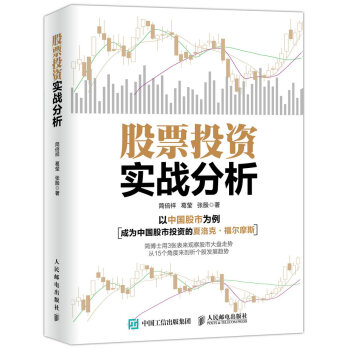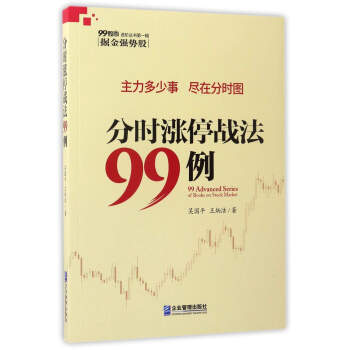![量子金融(英文版) [Quantum Finance: Path Integrals and Hamiltonians for Options and Interest Rates]](https://pic.tinynews.org/10104507/f22cf6ed-43e3-49b5-a24e-adfa96b3208a.jpg)
量子金融(英文版) [Quantum Finance: Path Integrals and Hamiltonians for Options and Interest Rates] pdf epub mobi txt 电子书 下载 2025
- Quantum Finance
- Path Integrals
- Options Pricing
- Interest Rate Modeling
- Hamiltonian Systems
- Financial Engineering
- Mathematical Finance
- Quantum Mechanics
- Stochastic Calculus
- Derivative Pricing

具体描述
内容简介
近年来,金融数学的发展离不开随机微积分,而《量子金融(英文版)》提供了一种完全独立于该方法的新方法,将量子力学和量子场论中的数学公式和概念运用到期货理论和利率模型中,重点讲述路径积分。相应的得到了不少新的预期结果。《量子金融(英文版)》主要介绍了金融基本概念:金融基础;衍生证券;有限自由度系统:哈密顿体系和股票期货;路径积分和股票期货;随机利率模型的哈密顿体系和路径积分;利率模型的量子场论:利率远期合约的量子场论;经验利率远期合约和场论模型;国债衍生品场论;利率远期合约和场论哈密顿体系结论。内页插图
目录
ForewordPreface
Acknowledgments
1 Synopsis
Part I Fundamental concepts of finance
2 Introduction to finance
2.1 Efficient market: random evolution of securities
2.2 Financial markets
2.3 Risk and return
2.4 Time value of money
2.5 No arbitrage, martingales and risk-neutral measure
2.6 Hedging
2.7 Forward interest rates: fixed-income securities
2.8 Summary
3 Derivative securities
3.1 Forward and futures contracts
3.2 Options
3.3 Stochastic differential equation
3.4 Ito calculus
3.5 Black-Scholes equation: hedged portfolio
3.6 Stock price with stochastic volatility
3.7 Merton——Garman equation
3.8 Summary
3.9 Appendix: Solution for stochastic volatility with p = 0
Part Ⅱ Systems with finite number of degrees of freedom
4 Hamiltonians and stock options
4.1 Essentials of quantum mechanics
4.2 State space: completeness equation
4.3 Operators: Hamiltonian
4.4 Biack-Scholes and Merton-Garman Hamiltonians
4.5 Pricing kernel for options
4.6 Eigenfunction solution of the pricing kernel
4.7 Hamiltonian formulation of the martingale condition
4.8 Potentials in option pricing
4.9 Hamiltonian and barrier options
4.10 Summary
4.11 Appendix: Two-state quantum system (qubit)
4.12 Appendix: Hamiltonian in quantum mechanics
4.13 Appendix: Down-and-out barrier options pricing kernel
4.14 Appendix: Double-knock-out barrier options pricing kernel
4.15 Appendix: Schrodinger and Black-Scholes equations
5 Path integrals and stock options
5.1 Lagrangian and action for the pricing kernel
5.2 Black-Scholes Lagrangian
5.3 Path integrals for path-dependent options
5.4 Action for option-pricing Hamiltonian
5.5 Path integral for the simple harmonic oscillator
5.6 Lagrangian for stock price with stochastic volatility
5.7 Pricing kernel for stock price with stochastic volatility
5.8 Summary
5.9 Appendix: Path-integral quantum mechanics
5.10 Appendix: Heisenbergs uncertainty principle in finance
5.11 Appendix: Path integration over stock price
5.12 Appendix: Generating function for stochastic volatility
5.13 Appendix: Moments of stock price and stochastic volatility
5.14 Appendix: Lagrangian for arbitrary at
5.15 Appendix: Path integration over stock price for arbitrary at
5.16 Appendix: Monte Carlo algorithm for stochastic volatility
5.17 Appendix: Mertons theorem for stochastic volatility
6 Stochastic interest rates Hamiltonians and path integrals
6.1 Spot interest rate Hamiltonian and Lagrangian
6.2 Vasicek models path integral
6.3 Heath-Jarrow-Morton (HJM) models path integral
6.4 Martingale condition in the HJM model
6.5 Pricing of Treasury Bond futures in the HJM model
6.6 Pricing of Treasury Bond option in the HJM model
6.7 Summary
6.8 Appendix: Spot interest rate Fokker-Planck Hamiltonian
6.9 Appendix: Affine spot interest rate models
6.10 Appendix: Black-Karasinski spot rate model
6.11 Appendix: Black-Karasinski spot rate Hamiltonian
6.12 Appendix: Quantum mechanical spot rate models
Part Ⅲ Quantum field theory of interest rates models
7 Quantum field theory of forward interest rates
7.1 Quantum field theory
7.2 Forward interest rates action
7.3 Field theory action for linear forward rates
7.4 Forward interest rates velocity quantum field A(t, x)
7.5 Propagator for linear forward rates
7.6 Martingale condition and risk-neutral measure
7.7 Change of numeraire
7.8 Nonlinear forward interest rates
7.9 Lagrangian for nonlinear forward rates
7.10 Stochastic volatility: function of the forward rates
7.11 Stochastic volatility: an independent quantum field
7.12 Summary
7.13 Appendix: HJM limit of the field theory
7.14 Appendix: Variants of the rigid propagator
7.15 Appendix: Stiff propagator
7.16 Appendix: Psychological future time
7.17 Appendix: Generating functional for forward rates
7.18 Appendix: Lattice field theory of forward rates
7.19 Appendix: Action S, for change of numeraire
8 Empirical forward interest rates and field theory models
8.1 Eurodollar market
8.2 Market data and assumptions used for the study
8.3 Correlation functions of the forward rates models
8.4 Empirical correlation structure of the forward rates
8.5 Empirical properties of the forward rates
8.6 Constant rigidity field theory model and its variants
8.7 Stiff field theory model
8.8 Summary
8.9 Appendix: Curvature for stiff correlator
9 Field theory of Treasury Bonds derivatives and hedging
9.1 Futures for Treasury Bonds
9.2 Option pricing for Treasury Bonds
9.3 Greeks for the European bond option
9.4 Pricing an interest rate cap
9.5 Field theory hedging of Treasury Bonds
9.6 Stochastic delta hedging of Treasury Bonds
9.7 Stochastic hedging of Treasury Bonds: minimizing variance
9.8 Empirical analysis of instantaneous hedging
9.9 Finite time hedging
9.10 Empirical results for finite time hedging
9.11 Summary
9.12 Appendix: Conditional probabilities
9,13 Appendix: Conditional probability of Treasury Bonds
9.14 Appendix: HJM limit of hedging functions
9.15 Appendix: Stochastic hedging with Treasury Bonds
9.16 Appendix: Stochastic hedging with futures contracts
9.17 Appendix: HJM limit of the hedge parameters
10 Field theory Hamiltonian of forward interest rates
10.1 Forward interest rates Hamiltonian
10.2 State space for the forward interest rates
10.3 Treasury Bond state vectors
10.4 Hamiltonian for linear and nonlinear forward rates
10.5 Hamiltonian for forward rates with stochastic volatility
10.6 Hamiltonian formulation of the martingale condition
10.7 Martingale condition: linear and nonlinear forward rates
10.8 Martingale condition: forward rates with stochastic volatility
10.9 Nonlinear change of numeraire
10.10 Summary
10.11 Appendix: Propagator for stochastic volatility
10.12 Appendix: Effective linear Hamiltonian
10.13 Appendix: Hamiltonian derivation of European bond option
11 Conclusions
A Mathematical background
A.1 Probability distribution
A.2 Dirac Delta function
A.3 Gaussian integration
A.4 White noise
A.5 The Langevin Equation
A.6 Fundamental theorem of finance
A.7 Evaluation of the propagator
Brief glossary of financial terms
Brief glossary of physics terms
List of main symbols
References
Index
前言/序言
Financial markets have undergone tremendous growth and dramatic changes in the past two decades, with the volume of daily trading in currency markets hitting over a trillion US dollars and hundreds of billions of dollars in bond and stock markets.Deregulation and globalization have led to large-scale capital flows; this has raised new problems for finance as well as has further spurred competition among banks and financial institutions.The resulting booms, bubbles and busts of the global financial markets now directly affect the lives of hundreds of millions of people, as was witnessed during the 1998 East Asian financial crisis.
The principles of banking and finance are fairly well established [ 16, 76, 87] and the challenge is to apply these principles in an increasingly complicated environment. The immense growth of financial markets, the existence of vast quantities of financial data and the growing complexity of the market, both in volume and sophistication, has made the use of powerful mathematical and computational tools in finance a necessity. In order to meet the needs of customers, complex financial instruments have been created; these instruments demand advanced valuation and risk assessment models and systems that quantify the returns and risks for investors and financial institutions [63, 100].
The widespread use in finance of stochastic calculus and of partial differential equations reflects the traditional presence of probabilists and applied mathematicians in this field. The last few years has seen an increasing interest of theoretical physicists in the problems of applied and theoretical finance. In addition to the ast corpus of literature on the application of stochastic calculus to finance,concepts from theoretical physics have been finding increasing application in both theoretical and applied finance. The influx of ideas from theoretical physics, as expressed for example in [ 18] and [69], has added a whole collection of new mathematical and computational techniques to finance, from the methods of classical and quantum physics to the use of path integration, statistical mechanics and so on. This book is part of the on-going process of applying ideas from physics to finance.
用户评价
这本书的书名《量子金融:路径积分与哈密顿量在期权与利率中的应用》(Quantum Finance: Path Integrals and Hamiltonians for Options and Interest Rates)本身就极具吸引力,它承诺将量子物理学的深刻理论与金融学中最具挑战性的领域——期权定价和利率建模——结合起来。作为一名在金融行业工作多年,并对前沿学术研究保持高度关注的专业人士,我一直觉得传统的金融模型在解释市场的某些极端行为和内在不确定性方面存在局限。量子力学的概率性质,尤其是其处理不确定性和叠加态的方式,似乎为理解金融市场的复杂动态提供了一种全新的可能性。我尤其对书中提到的“路径积分”概念感到好奇。在物理学中,路径积分是一个强大的工具,用于计算量子系统在时空中所有可能路径的贡献总和,这与期权定价中需要考虑标的资产价格在到期前所有可能演变路径,并对其进行积分以获得期望收益的本质非常相似。我非常期待看到作者是如何将这种物理学的计算方法应用于金融衍生品的定价,以及其数学上的严谨性和计算上的可行性。同样,“哈密顿量”作为描述量子系统能量及其演化的核心算符,在书中又将如何被赋予金融含义?它是否能提供一个更具动态性和更全面的视角来刻画利率的变动,或者作为一种“驱动力”来解释期权价值的变化?这本书是否能提供超越现有Black-Scholes框架的更深刻的见解,或者为理解利率期限结构提供全新的模型?我对书中能否成功地架起这座跨学科的桥梁,并提供实用且创新的金融工具,抱有极大的期望。
评分这本书的书名,特别是“量子金融”以及“路径积分”和“哈密顿量”这些术语,立刻引起了我作为一名金融工程师的强烈兴趣。在日常工作中,我常常感到现有的金融模型,如Black-Scholes或各种随机利率模型,在解释市场中的某些异常现象,例如波动率的集聚、极端事件的频繁出现以及信息传递的非线性等方面,存在着固有的局限性。我一直相信,金融市场可能存在比经典概率论更深层次的数学结构,而量子力学,以其对概率、叠加和纠缠的独特处理方式,似乎为探索这些深层结构提供了一个极具潜力的方向。我尤其关注书中对“路径积分”的应用。在物理学中,路径积分是一种计算量子系统在所有可能路径上的演化幅度的强大工具,这与期权定价中需要对标的资产价格从当前到到期日的无数种可能路径进行积分以获得期望收益的过程有着惊人的相似之处。我非常期待了解作者是如何将这种方法论迁移到金融领域,以及它能否带来更精确的期权定价结果。同样,“哈密顿量”作为量子系统的能量算符,其在金融领域的对应物是什么?它是否能为我们提供一个更深刻的视角来理解利率的动态演变,或者为构建更稳健的利率期限结构模型奠定基础?这本书是否能真正地将量子理论的抽象概念转化为可操作的金融工具,从而为我们提供理解和应对复杂金融市场的新范式?
评分这本书的书名,尤其是“量子金融”这一组合,立刻吸引了我。作为一名在金融市场中寻求更深层次理解的实践者,我常常感到,我们现有的金融模型,在描述市场的某些极端行为、信息传播的非对称性以及市场参与者之间的复杂互动时,显得捉襟见肘。量子力学,以其对概率、叠加态和不确定性的内在处理能力,在我看来,为我们理解金融市场的这些“反常”现象提供了一个全新的、或许更贴切的数学框架。我特别关注书中对“路径积分”的阐述。在物理学中,路径积分是计算量子系统在时空中所有可能路径贡献的总和的方法,这与期权定价中需要考虑资产价格从当前到到期日的所有可能演变路径,并从中计算出期望价值的过程有着天然的类比。我十分期待了解作者是如何将这种强大的计算工具应用于金融衍生品的定价,以及其数学上的严谨性和应用上的前景。同样,“哈密顿量”在量子力学中是描述系统能量和演化的核心,它在金融领域又将如何被赋予意义?它是否能为我们提供一个更具解释力和动态性的利率模型,或者成为理解期权价值变化驱动因素的关键?我对这本书能否真正地将量子理论的抽象概念转化为实际可用的金融分析工具,从而为期权定价和利率建模带来突破,抱有极大的期待。
评分这本书,或者说作者试图构建的这个“量子金融”的宏大叙事,从书名本身就透露出一种强烈的吸引力。它承诺将两个看似风马牛不相及的领域——量子力学和金融学——有机地融合在一起,这本身就足以激发我作为一名深度金融从业者和业余物理爱好者极大的好奇心。我一直在思考,我们习以为常的金融模型,那些基于概率论、统计学甚至一些粗糙的近似,是否真的能捕捉到金融市场的复杂性和内在的涌现性。量子力学,以其概率波、叠加态、纠缠态等概念,似乎为理解这些复杂性提供了一种全新的视角。书中提及的“路径积分”和“哈密顿量”这些术语,立刻勾勒出一种从微观粒子行为到宏观系统演化的物理学研究范式,我非常期待看到作者如何将其巧妙地映射到金融衍生品定价和利率模型构建中。例如,路径积分在物理学中常用于计算粒子在不同路径上的概率幅,这与金融中计算期权价格(即资产价格在到期时达到某一特定值的概率)有着天然的类比。而哈密顿量则描述了系统的能量,在金融中,能否将其理解为某种“成本”或“驱动力”?我迫切想知道书中是如何具体阐述这些概念的,是如何将抽象的物理原理转化为可操作的金融数学工具的。更重要的是,我关注的不仅仅是理论上的可能性,更是其在实际应用中的潜力。这本书是否能够为我们提供更精准、更鲁棒的定价模型?它是否能帮助我们更好地理解金融市场的风险,甚至预测市场行为?这种跨学科的探索,如果能成功,必将对金融学的研究和实践产生深远的影响,而这本书,正是这场可能改变游戏规则的探索之旅的起点。
评分当我第一次看到这本书名《量子金融:路径积分与哈密顿量在期权与利率中的应用》(Quantum Finance: Path Integrals and Hamiltonians for Options and Interest Rates)时,我的脑海中立刻浮现出无数的可能性。我是一名对金融市场抱有强烈好奇心的投资者,同时也对基础科学的最新进展充满热情。长期以来,我一直在思考,我们用来描述金融市场,尤其是期权定价和利率行为的数学模型,是否真的足够强大,能够捕捉到市场中那些看似随机但又暗藏规律的复杂性。量子力学,以其独特的处理概率、叠加态和不确定性的方式,一直让我觉得它可能蕴含着理解这些金融现象的新钥匙。书中明确提及的“路径积分”这一概念,在物理学中常用于描述粒子在不同路径上的累积效应,这与我理解的期权定价需要考虑资产价格在整个到期过程中的所有可能轨迹,并从中计算出期望值的过程有着天然的契合。我迫切想知道作者是如何将这种物理学中的精妙计算方法,转化为对复杂期权合约进行精确定价的工具。此外,“哈密顿量”作为量子系统的核心,决定了其演化方向和能量状态,在金融领域,它是否能被视为一种能够驱动金融资产价格变化,或者刻画利率曲线动态的根本性力量?我期待这本书能提供一种全新的视角,一种能够比现有模型更深刻地揭示市场内在机制的理解方式,并且这些理论创新能够转化为切实可行的投资策略和风险管理工具。
评分《量子金融:路径积分与哈密顿量在期权与利率中的应用》(Quantum Finance: Path Integrals and Hamiltonians for Options and Interest Rates)这个书名,如同一道跨越学科界限的闪电,瞬间点燃了我内心深处的学术好奇。作为一名在金融领域摸爬滚打多年的研究者,我深知我们现有的模型,尽管强大,却往往难以完全捕捉到金融市场的内在复杂性、非线性涌现以及信息传递的微妙之处。量子力学的语言,其天然的概率性、叠加态和非局域性,在我看来,为理解这些“反常”金融现象提供了一个非常诱人的视角。我对书中提及的“路径积分”尤其感兴趣。在量子物理学中,它是计算粒子穿越所有可能路径的贡献总和的强大方法,这与期权定价中需要考虑标的资产价格在到期前所有可能轨迹的演化,并对其进行加权平均以得到期望价值的本质惊人地相似。我迫切想知道作者如何将这种精妙的物理学计算工具“移植”到金融领域,以及其数学上的严谨性和应用上的可行性。同样,作为量子力学核心的“哈密顿量”,它如何被赋予金融意义?它是否能提供一种超越经典模型的新视角来刻画利率的动态变化,或者作为驱动期权价值演变的力量?这本书是否能成功地构建起一座坚实的桥梁,将量子物理学的深刻洞察转化为金融学研究的创新工具,从而为期权定价和利率建模带来革命性的突破?
评分这本书的书名,尤其是“量子金融”这个词,立刻抓住了我。作为一个对金融市场的深度参与者,我一直在寻求超越传统模型局限性的方法。我深知,金融市场在很多方面都表现出非线性和涌现性,这些特征往往难以用经典概率论或随机过程来完全捕捉。量子力学的语言,如概率波、叠加态和非局域性,似乎为理解这些现象提供了一个更符合直觉的框架。书中提到的“路径积分”,在量子场论中用于计算粒子在时空中所有可能路径的贡献,这让我联想到期权定价中需要考虑标的资产价格从当前到到期的所有可能演变路径,并对这些路径进行加权平均以获得期望收益。我非常期待看到作者如何将这种强大的计算工具从微观物理世界迁移到宏观金融市场。同样,“哈密顿量”作为描述量子系统能量和演化的核心,在金融语境下又将如何被解读?它是否能代表某种内在的“驱动力”或“约束条件”,以一种比现有利率模型更具解释力的方式来描述利率的动态?我希望这本书能提供一套严谨的数学框架,将这些量子概念转化为实用的金融工具,从而帮助我们更深入地理解金融市场的运作机制,并可能在期权定价和利率建模方面带来革命性的突破。
评分我的目光被《量子金融:路径积分与哈密顿量在期权与利率中的应用》(Quantum Finance: Path Integrals and Hamiltonians for Options and Interest Rates)吸引,主要是因为书名中“量子金融”这个词所蕴含的跨学科魅力,以及其承诺将物理学最前沿的概念应用于金融学中最具挑战性的领域。作为一名对金融建模充满热情的学者,我一直认为,我们现有的金融模型,尽管在实践中取得了巨大的成功,但在解释金融市场的非理性行为、极端事件的发生以及信息的非对称传播等方面,仍然存在着明显的不足。量子力学,以其对概率、叠加态和纠缠态的深刻理解,为我们提供了一种全新的视角来审视这些问题。我尤其对书中可能涉及的“路径积分”方法感到好奇。在物理学中,路径积分是一种计算量子粒子在不同路径上概率幅的方法,这与期权定价中需要考虑标的资产价格从现在到到期过程中所有可能的演变路径,并从中计算出期望值有着非常自然的类比。我非常期待看到作者如何巧妙地将这种复杂的数学工具应用于金融衍生品的定价,以及其背后是否有深刻的数学或物理学原理支撑。同样,“哈密顿量”在量子力学中扮演着核心角色,它描述了系统的能量和演化,在金融领域,它是否能被用来构建更具动态性和解释力的利率模型,或者作为一种“驱动力”来刻画期权价值的变化?这本书是否能够真正地弥合理论物理与金融实践之间的鸿沟,并为金融建模带来突破性的进展?
评分读到这本书的标题,我立刻被它所提出的“路径积分”和“哈密顿量”这些量子物理学中的核心概念所吸引,并将其与金融世界的复杂性联系起来。作为一名对金融建模有着浓厚兴趣的学者,我一直深信,金融市场并非完全遵循经典的牛顿力学所描述的那种确定性或简单的随机性。市场的非线性、涌现行为以及信息的传播方式,往往比我们现有模型所能捕捉的更加微妙和深刻。量子力学,以其对概率、叠加和不确定性的内在处理能力,似乎为理解这些非经典特征提供了一个有力的数学框架。书中提及的“路径积分”方法,在物理学中用于计算粒子穿越所有可能路径的总概率幅,这与期权定价中需要考虑资产价格所有可能路径的演化,从而计算出期权价值的本质有着惊人的相似性。我非常好奇作者是如何将这种抽象的数学工具转化为对期权定价的具体描述的。同样,“哈密顿量”在量子力学中代表系统的总能量,它驱动系统的演化。在金融领域,它是否可以被解释为某种“风险因子”或“市场动力”?它是否能够以一种比传统利率模型更全面的方式来刻画利率的动态变化?我对书中如何构建这些类比,以及这些类比背后是否存在深刻的数学和经济学上的统一性,充满了疑问和期待。这本书的价值,我认为不仅在于它可能提出的新颖数学工具,更在于它能否提供一种全新的哲学视角来审视金融市场的本质,以及这些理论工具是否能带来更优越的风险管理和投资策略。
评分《量子金融:路径积分与哈密顿量在期权与利率中的应用》(Quantum Finance: Path Integrals and Hamiltonians for Options and Interest Rates)这个书名,对于我这样一个既对金融建模充满热情,又对基础物理学理论有着浓厚兴趣的读者来说,无疑是一剂强心针。我一直在思考,我们现有的金融模型,在捕捉金融市场的非线性、涌现性以及信息传播的复杂性方面,是否真的达到了理论上的极限。量子力学,以其对概率、叠加和不确定性的深刻理解,似乎为我们提供了一个全新的、更贴近现实的数学工具箱。我特别好奇书中对“路径积分”的运用。在量子物理学中,路径积分是计算粒子在时空中所有可能路径贡献总和的强大方法,这与期权定价中需要考虑标的资产价格从现在到到期日的所有可能演变路径,并对其进行加权平均以获得期望值的过程有着惊人的相似之处。我非常期待了解作者是如何将这种抽象的物理计算方法,转化为对复杂期权合约进行精确定价的工具,以及其数学上的严谨性和计算上的可行性。同样,“哈密顿量”作为描述量子系统能量和演化的核心算符,在金融领域又将如何被赋予数学和经济学意义?它是否能提供一种超越现有模型的、更具动态性和解释力的利率模型,或者成为理解期权价值如何演变的关键?这本书是否能够真正地架起一座跨学科的桥梁,为金融学的研究和实践带来革命性的创新?
评分书不错,内容经典,便宜
评分读起来有点头疼,有的是物理方面的,有的是金融方面的
评分好
评分量子的图书,金融的味道,很权威的教材,通俗易懂
评分以基础物理的量子场论结合经济学的典范。
评分不错
评分书不错,内容经典,便宜
评分抢到了抢到了 抢到了 所属科目:物理
评分观点很独特,虽然我还没有细心钻研,不过好像找到了一些内在联系
相关图书
本站所有内容均为互联网搜索引擎提供的公开搜索信息,本站不存储任何数据与内容,任何内容与数据均与本站无关,如有需要请联系相关搜索引擎包括但不限于百度,google,bing,sogou 等
© 2025 book.idnshop.cc All Rights Reserved. 静思书屋 版权所有




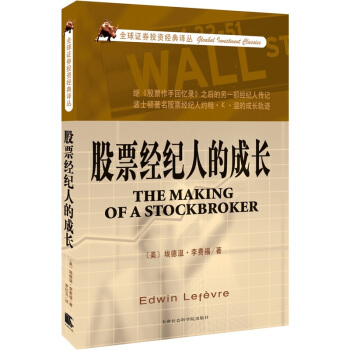






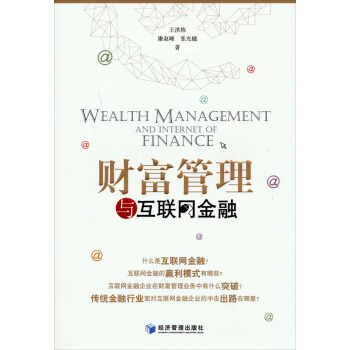
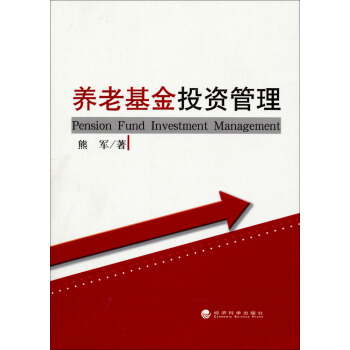
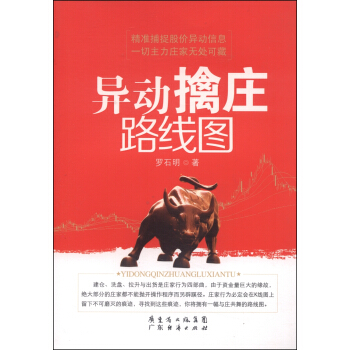
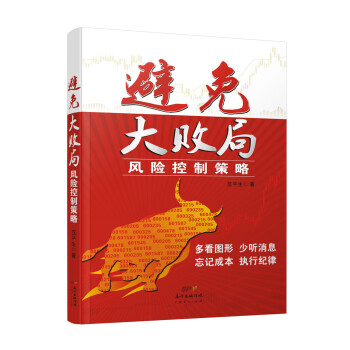
![天九湾贸易金融丛书:国际商会信用证案例评析 [Sky Trade Finance Series:Case Studies on Letters of Credit] pdf epub mobi 电子书 下载](https://pic.tinynews.org/11592667/5493a147Nacaf6781.jpg)
![股票技术分析大全 [Technical analysis of stock] pdf epub mobi 电子书 下载](https://pic.tinynews.org/11970588/577e3742Nf28f3b4d.jpg)
